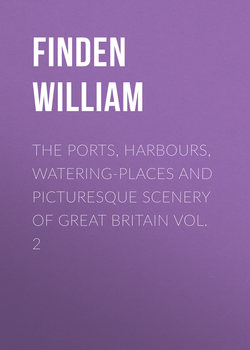Читать книгу The Ports, Harbours, Watering-places and Picturesque Scenery of Great Britain Vol. 2 - Finden William - Страница 3
CANNING DOCK AND CUSTOM-HOUSE, LIVERPOOL
ОглавлениеLiverpool presents one of the most remarkable instances on record of the vast influence of commercial speculation, when pursued with steady vigour, prudence, and resolution. Commerce is the first step to empire, and, successfully prosecuted, never fails to consolidate the strength and independence of the state. To this important end no city in the kingdom has so amply contributed as Liverpool; none of our rivers, the Thames excepted, has wafted to our shores so many precious cargoes as the Mersey, nor exported so much of the produce of our native manufactures to all parts of the world. This great commercial city, rapid as its progress has been, is still advancing in the career of prosperity; hardly a month passes without some local improvement, – some substantial proof that her trade is on the increase, stimulating domestic industry, and affording the means of unlimited intercourse with every shore of the commercial world.
Canning Dock, with the Custom-house, forms one of the finest points of view in Liverpool, presenting at one view a building of elegant design and execution, and a forest of masts which sufficiently indicate the bustle of trade, and the air of business that pervade every feature of the place – animate or inanimate. Canning Dock – so distinguished in honour of Mr. Canning, a name happily identified with Liverpool and the prosperity of its trade, – covers a space of five hundred yards in length. On the west side it communicates with three graving docks, where vessels are laid up for repairs, and is chiefly occupied by vessels trading to the northern coast. It is the first of the seven docks extending southward, and is generally filled by vessels in the act of discharging or taking in their cargoes. It presents a scene of great bustle and activity, and, though only one out of many, affords the stranger a very clear idea of the vast amount of traffic that is daily shipped or entered at this emporium.
The Custom-House is of recent date, and replaced the old official buildings, which were found quite inadequate to the purposes of a daily extending commerce. Through the united interest of Canning and Huskisson, negociations were entered into with Government as to the necessity of a new Custom-house; and after a short time arrangements were concluded for its immediate erection. Mr. Foster, architect to the Liverpool corporation, was engaged to prepare the designs, and made choice of the present site as the most appropriate for a commercial building of this size and character.
The lower apartments of the Custom-house consist of spacious vaults for the safe custody of bonded and other goods; and in the centre is the apartment known as the Long Room. The offices of customs occupy the whole extent of the west wing; and it is intended that part of the east wing shall be appropriated to the use of the general post-office. Above these are the excise offices and those of the dock-treasurer and secretaries. The remaining portions of the edifice are subdivided into the board-room, the dock-committee's offices, and the stamp-office.
The chasteness and beauty of the Ionic style of architecture adopted in this magnificent edifice have been much and justly admired. The centre, and the east and west fronts are adorned by lofty porticos, each supported by eight Ionic columns. The centre of the building is surmounted by a magnificent dome, lighted by sixteen windows, and ornamented round by pilasters. Inclosed within the outer dome is a smaller one encircled by twelve windows, so as to afford sufficient light to the Long Room. The interior of this building will amply repay the stranger for a visit. The grand front is opposite Castle-street; and, entering in this direction, the first object which claims attention is the massive grouping of the pilasters which support the floor of the Long Room over head. The stairs, flanked by handsome iron balustrades, – the landing-places supported by eight Ionic stone columns, each of a single piece, – the four pilasters, and the elaborate ceilings, – are all deserving of particular attention. The Long Room is altogether splendidly designed and executed; lighted by fourteen windows on the sides, and by twelve as already observed, in the inner dome. The ceiling is divided by lateral and transverse beams into regular compartments, all beautifully ornamented. At each of the opposite ends of this noble apartment are a corresponding flight of stairs and landing-places. But to convey a just description of this monument to the genius of commerce is at once difficult and tedious; we therefore recommend all who may visit Liverpool, as admirers of its docks, harbours, and splendid edifices, to devote an hour to the Custom-house – a building which reflects great honour upon the architect, and serves as a lasting ornament to the second city of the empire.
